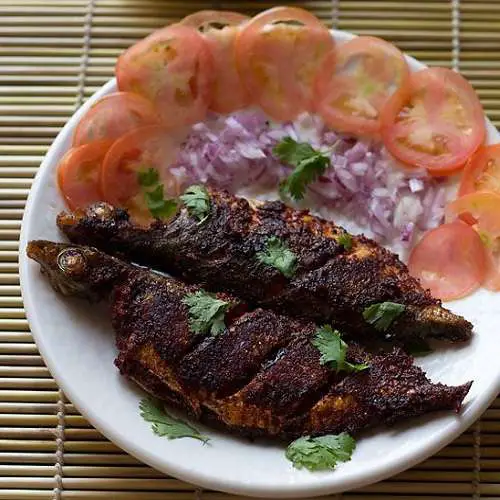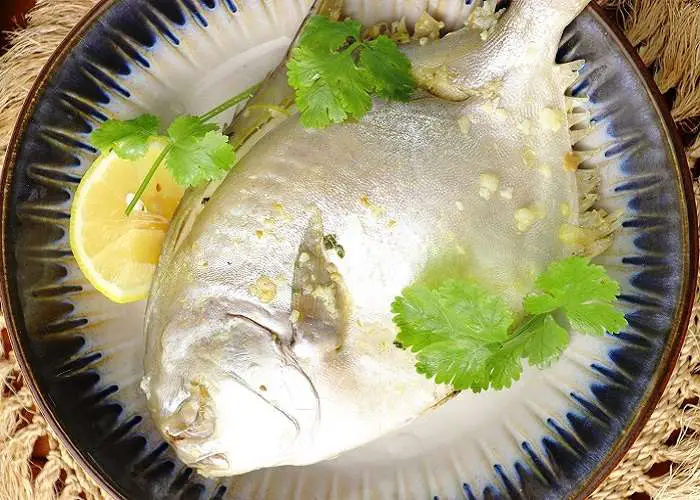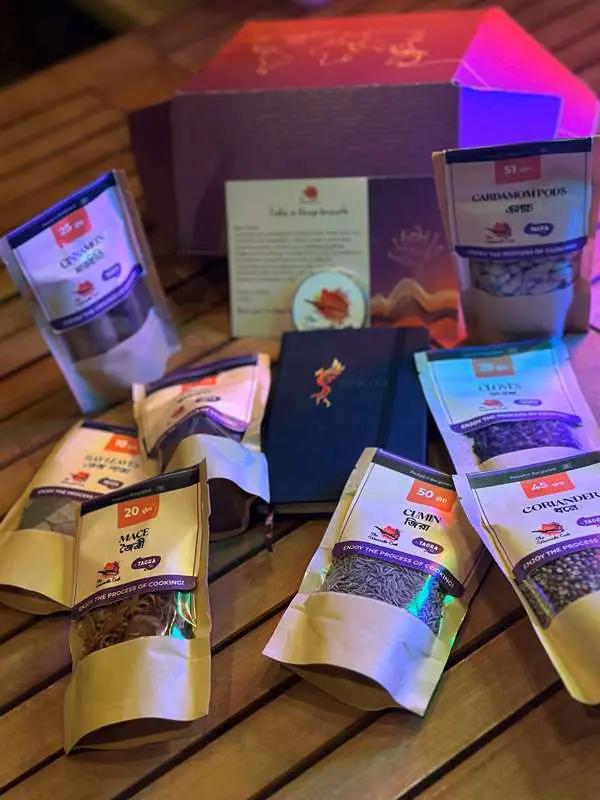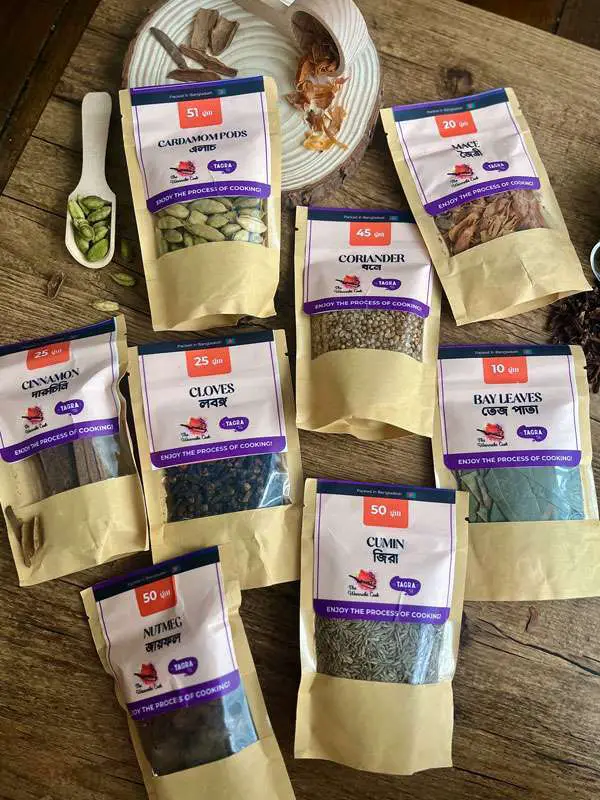Tular Dandi Fish: The Overlooked Gem of the Bengali Cuisine
 Tular Dandi fish—scientifically known as Sillaginopsis panijus—is a cherished species in Bangladeshi cuisine. Ever since I first heard about the tular dandi fish, the name alone has always made me laugh. It literally means “cotton stick,” and as a kid, I found the name so strange, unusual, and funny. This fish, found in both rivers and the sea around Bangladesh, isn’t particularly well-known. But anyone who’s tasted it even once probably hasn’t forgotten it. With its unique flavor and such an uncommon name, how could anyone forget it?
Tular Dandi fish—scientifically known as Sillaginopsis panijus—is a cherished species in Bangladeshi cuisine. Ever since I first heard about the tular dandi fish, the name alone has always made me laugh. It literally means “cotton stick,” and as a kid, I found the name so strange, unusual, and funny. This fish, found in both rivers and the sea around Bangladesh, isn’t particularly well-known. But anyone who’s tasted it even once probably hasn’t forgotten it. With its unique flavor and such an uncommon name, how could anyone forget it?
Getting to Know Tular Dandi Fish
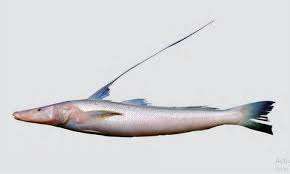
Bangladesh’s coastal waters are home to many significant fish species that play a vital role in supporting the country’s economy. Among these fishes a very common name is flathead sillago (Sillaginopsis panijus), known locally as Tular Dandi. The flathead sillago is a versatile fish that thrives in both the sea and fresh or brackish waters. It’s typically found in shallow, muddy bays across tropical regions. With its flat head, small eyes, and a distinctive long second dorsal spine, it stands out from the crowd. The fish can grow up to 44 cm in length with an average length being 25 cm.
Nutrient Profile of Tular Dandi Fish Per 100 g
Here’s some insight on the importance of Tular Dandi fish as a food source. For 100g of edible portion, you can expect:
- Calcium: 178 mg
- Iron: 1.58 mg
- Protein: 19.3%
- Omega-3: 0.14 g
- Selenium: 56.5 μg
- Vitamin A: 16.4 μg
- Zinc: 1.04 mg
Health Benefits of Tular Dandi Fish
 Incorporating Tular Dandi fish into your regular diet can offer several significant health benefits:
Incorporating Tular Dandi fish into your regular diet can offer several significant health benefits:
- Source of Important Nutrients: Fish in general is rich in high-quality protein, iodine, and various vitamins and minerals, all of which are crucial for optimal body and brain function.
- Might Help to Lower the Risk of Heart Disease: Studies show that consuming fish on a regular basis can help to reduce risk of heart attacks, strokes, and other heart disease. People who eat fish at least once a week have a 15% lower risk of heart disease.
- Contain Crucial Nutrients: Fish contains many of the crucial nutrients that are essential for body development. For example Omega-3 fatty acids are essential for growth and development, particularly for brain and eye development. Pregnant and breastfeeding women are often advised to consume adequate omega-3s, though they should choose fish low in mercury to avoid potential developmental issues.
- May Boost Brain Health: Regular fish consumption has been associated with a slower rate of cognitive decline and a reduced risk of Alzheimer’s disease. The gray matter in your brain, which contains neurons responsible for processing information and storing memories, tends to remain more intact in individuals who eat fish regularly.
- May Help Prevent and Treat Depression: Depression is a common mental condition characterized by low mood, decreased energy, and loss of interest in life and activities. Studies have found that people who eat fish regularly are less likely to become depressed. Omega-3 fatty acids may also increase the effectiveness of antidepressant medications.
- A Good Dietary Sources of Vitamin D: Vitamin D functions like a steroid hormone in the body, and a large portion of the population is deficient in it. Fish is always a good source of vitamin D. Sleep disorders have become incredibly common worldwide. Increased fish consumption has been linked to improved sleep quality, possibly due to its vitamin D content.
May Reduce Risk of Autoimmune Diseases: Autoimmune diseases like type 1 diabetes occur when the immune system mistakenly attacks healthy body tissues. Several studies have shown that omega-3 or fish oil intake is linked to a reduced risk of type 1 diabetes in children and a form of autoimmune diabetes in adults. - May Help Prevent Asthma in Children: Asthma is a common disease characterized by chronic inflammation of the airways. Studies show that regular fish consumption is linked to a 24% lower risk of asthma in children, though no significant effect has been found in adults.
- May Protect Your Vision in Old Age: Age-related macular degeneration (AMD) is a leading cause of vision impairment and blindness among older adults. Some evidence suggests that omega-3 fatty acids and fish may protect against this disease.
Traditional Tular Dandi Recipes
Bangladeshi cuisine offers a treasure trove of recipes that highlight the subtle flavor and tender texture of Tular Dandi fish. Here are two popular preparations:
Tular Dandi Wrapped in Banana Leaf or Tular Dandil Fish Paturi:

Fish paturi or the process of cooking the fish wrapped in some kind of leaves is probably unique to Bengali cuisine. To cook this very traditional and cherished recipe first you make a blend of onion, garlic, ginger, green chili, turmeric, coriander, cumin, and jaggery pastes, along with mustard oil and lemon juice. Now marinate the fish in it for a while, and then top each piece of fish with coriander leaf paste, and wrap them securely in a square of banana leaf. Gently cook them in a pan over low heat. The banana leaf serves a dual purpose: it acts as a natural, non-stick cooking vessel and imparts a subtle, earthy aroma to the fish. Once both sides are cooked, the fishes are ready to eat. These little parcels are typically served with steamed rice. Eating fish paturi is like unwrapping gifts but only better since you know exactly what each of these little gift wraps contain. Everyone at the table gets to unwrap and savor the tender, spiced wonder of a fish dish within.
Fish with Potatoes (Alu diye Tular Dandi):
 This recipe is a more straightforward and usual type of fish curry.
This recipe is a more straightforward and usual type of fish curry.
Ingredients:
- Tular Dandi fish
- Salt – to taste
- Turmeric powder – for marination
- Mustard oil – for frying and cooking
- Onions – chopped
- Ginger paste
- Garlic paste
- Tomatoes – chopped
- Cumin powder
- Coriander powder
- Red chili powder
- Potatoes – peeled and cubed
- Cilantro (fresh coriander leaves) – chopped, for garnish
- Steamed rice – for serving (optional but recommended)
Instructions:
- To prepare tular dandi fish curry with potatoes, start by cleaning 500 grams of Tular Dandi fish and marinate them with salt and turmeric powder for 15 minutes.
- Then heat mustard oil in a pan and fry the fish until golden brown, and set them aside.
- In the same oil, sauté chopped onions until translucent, add ginger and garlic paste, and cook until the raw aroma dissipates.
- Next, add chopped tomatoes and cook until they soften.
- Add cumin, coriander, and red chili powder, and cook the mixture until the oil separates.
- Add peeled and cubed potatoes, cook them for a little while and then add warm water to create a gravy.
- When the gravy starts to boil add the fried fish to the pan, cover, and simmer until the potatoes are tender and the gravy thickens.
- Garnish with chopped cilantro and serve hot with steamed rice.
Tulaar dandi fish surely offers a delicious and healthy option for your weekly menu. Have you tried Tular Dandi fish in your cooking? Share your favorite recipe or experience in the comments below!
Latest Recipe:
Follow Us:




